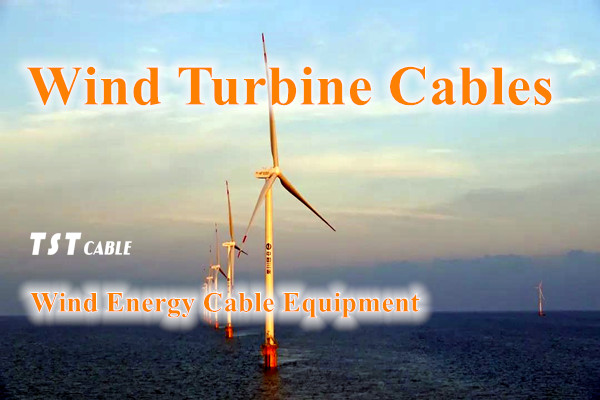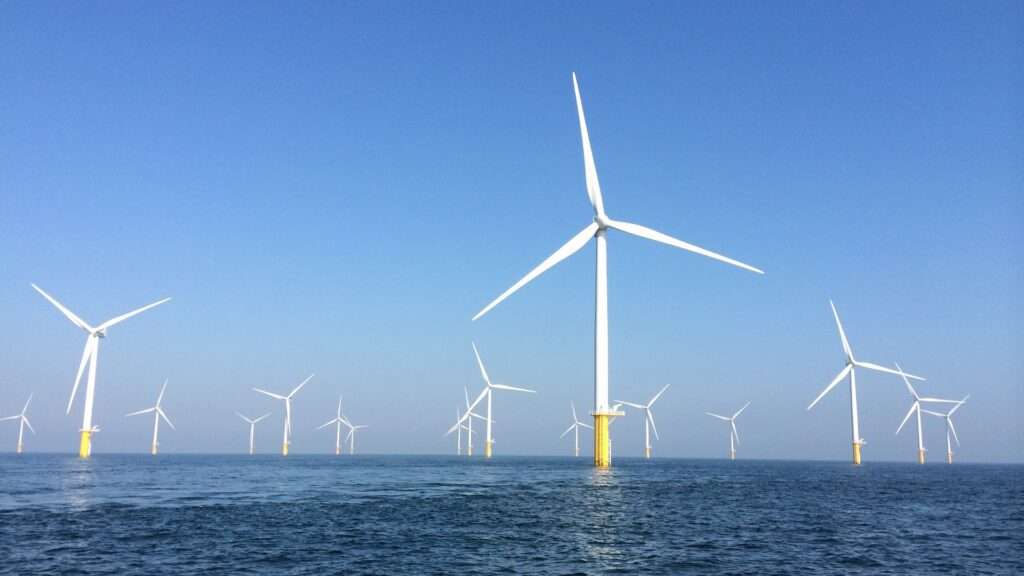
Wind energy cable is a type of power transmission line specially designed to connect wind turbines to the power grid. Wind power special cable is specially designed and manufactured for wind power generation system, which is characterized by low temperature resistance, wind sand resistance, UV radiation resistance, mechanical stress resistance and corrosion resistance. Its structure and material selection can meet the special working environment requirements of wind power generation system, such as the high salinity environment of offshore wind farms and the low temperature environment of high altitude areas. The basic principle of wind power special cable is based on electromagnetic induction and conductive conduction principle. When the wind turbine generates electrical energy, the electrical energy will be transmitted to the target equipment through the conductor of the cable. At the same time, the insulation layer and shielding layer of the cable can block the interference of external electromagnetic fields, ensuring the accuracy and stability of the transmitted signal.
With the increasing demand for renewable energy, wind power, as a widely utilized clean energy source, is increasingly valued for its power generation efficiency and reliability. Wind power cables play a key role in wind power systems by connecting wind turbines to the power grid and delivering the energy converted by wind power to consumers. Below TST CABLES share with you some knowledge about the application and characteristics of wind energy cables, wind turbine cables.
First, the application scope of wind energy cable field:
- Wind power farms: wind energy cable is an indispensable part of wind power farms. It connects the wind turbine and the converter to convert the electricity generated through the turbine into alternating current (AC) and deliver it to the substation or power grid.
- Offshore wind power: With the rapid development of offshore wind power, the application of wind power cables in offshore wind farms has become increasingly popular. Offshore wind farms are in harsh environments, the cable corrosion resistance, waterproof performance requirements are high, wind power cable must be able to operate stably for a long time in the harsh marine environment.
- Onshore wind power: In addition to offshore wind power, onshore wind farms are also the main application areas of wind power cables. On land, wind power cables need to pass through complex terrain, such as mountains, plains, etc., so they need to have good abrasion resistance and resistance to external damage.
- Wind power connection lines: In addition to connecting wind turbines and converters, wind power cables are also used to connect transmission lines between converters and power grids. These transmission lines usually span tens or even hundreds of kilometers, requiring wind power cables with high transmission efficiency and stability.
- Wind power cable supporting equipment: in addition to the wind power cable itself, its supporting equipment such as connectors, terminals, etc. is also an indispensable part of the wind power system. These ancillary equipment needs to be matched with the wind power cable to ensure the stable operation of the entire power transmission system.
Second, wind power cable classification and application
According to different uses and characteristics, wind energy cables can also be divided into grounding cables, power cables, control cables, communication cables and other types. Each of these cables has its own unique application in the wind power system:
- Grounding cable: mainly used to connect the metal structure of the wind turbine and the ground, play the role of grounding protection.
- Power cables: responsible for transmitting the power generated by the wind turbine to the substation or power grid.
- Control cables: used to transmit signals from sensors, monitoring equipment and controllers to realize the monitoring and control of the generator set and the whole wind power generation system.
- Communication cable: to realize the communication between various components within the wind power generation system and with the external system.
Third, the main characteristics and applications of wind turbine cables
1.Main features and functions of wind turbine cables
- High-temperature resistance: Since wind turbines generate high temperatures during operation, the cables must have high-temperature resistance to ensure that they can still work normally in high-temperature environments.
- High-voltage carrying capacity: capable of carrying high-voltage currents to ensure efficient transmission of electrical energy.
- Temperature resistance: good high temperature resistance to adapt to the high temperature environment generated by the wind turbine operation.
- Abrasion and corrosion resistance: wind turbines are usually located in harsh environments, such as offshore or high mountain areas. Therefore, the cables need to have good abrasion and corrosion resistance to ensure long-term stable operation.
- High-current transmission capacity: wind energy cables need to be able to carry the high currents generated by wind turbines to ensure the effective transmission of electrical energy.
- Fire performance: the cable should also have good fire performance to reduce the risk of fire.
- Resistant to wind and rain: with the ability to resist wind and rain erosion, to ensure stable operation in a variety of harsh weather conditions.
2.Application scope of wind turbine cables
- Wind power farms: It is an indispensable part of wind power farms, connecting wind turbines and power grids to realize the conversion and transmission of electricity.
- Adaptation to different environments: It can adapt to various climatic and environmental conditions, including harsh environments such as high mountains and the sea.
3.Technological innovation and preparation of wind turbine cables
- Material innovation: in order to improve the performance of the cable, manufacturers will use new materials, such as ethylene propylene rubber, to enhance the electrical insulation performance and flexibility of the cable.
- Preparation process: Special mixing technology and processing technology will be used in the preparation of cables to ensure the quality and performance of cables.
4.Market outlook and development trend of wind turbine cables
- Market outlook: With the increasing demand for renewable energy and the continuous progress of wind power generation technology, the market demand for wind turbine cables will continue to grow.
- Development trend: Cables will develop towards higher voltage transmission capacity, better quality materials and more advanced preparation processes to improve the transmission efficiency and service life of cables.
As a link between clean energy and the power grid, wind power cables play an important role in the wind power generation system. With the continuous development of renewable energy, the application scope of wind energy cables will be further expanded.
Wind turbine cables are a crucial part of the wind power generation system, which have a variety of characteristics and functions to ensure the stable transmission of electric energy and the safe operation of the whole system.
Wind turbine cables play a key role in the construction and operation of wind power generation systems. They not only ensure the safety, reliability and stability of power transmission of wind power generation equipment, but also are closely related to the development of new energy generation, smart grid and other fields. With the increasing global demand for renewable energy and the continuous progress of wind power generation technology, the importance and application value of wind turbine cables will continue to increase.
Also available in:
English


